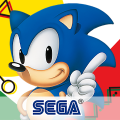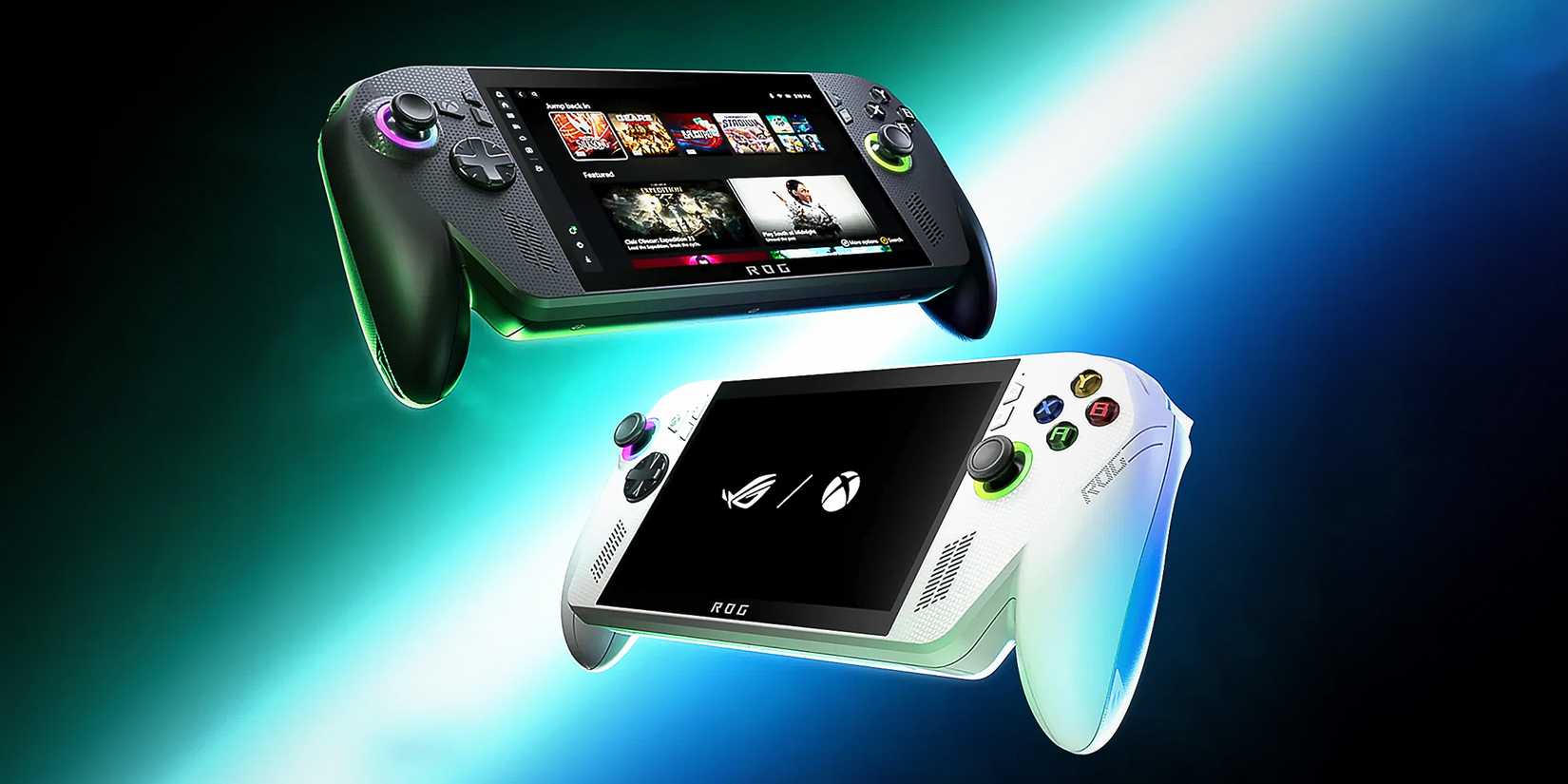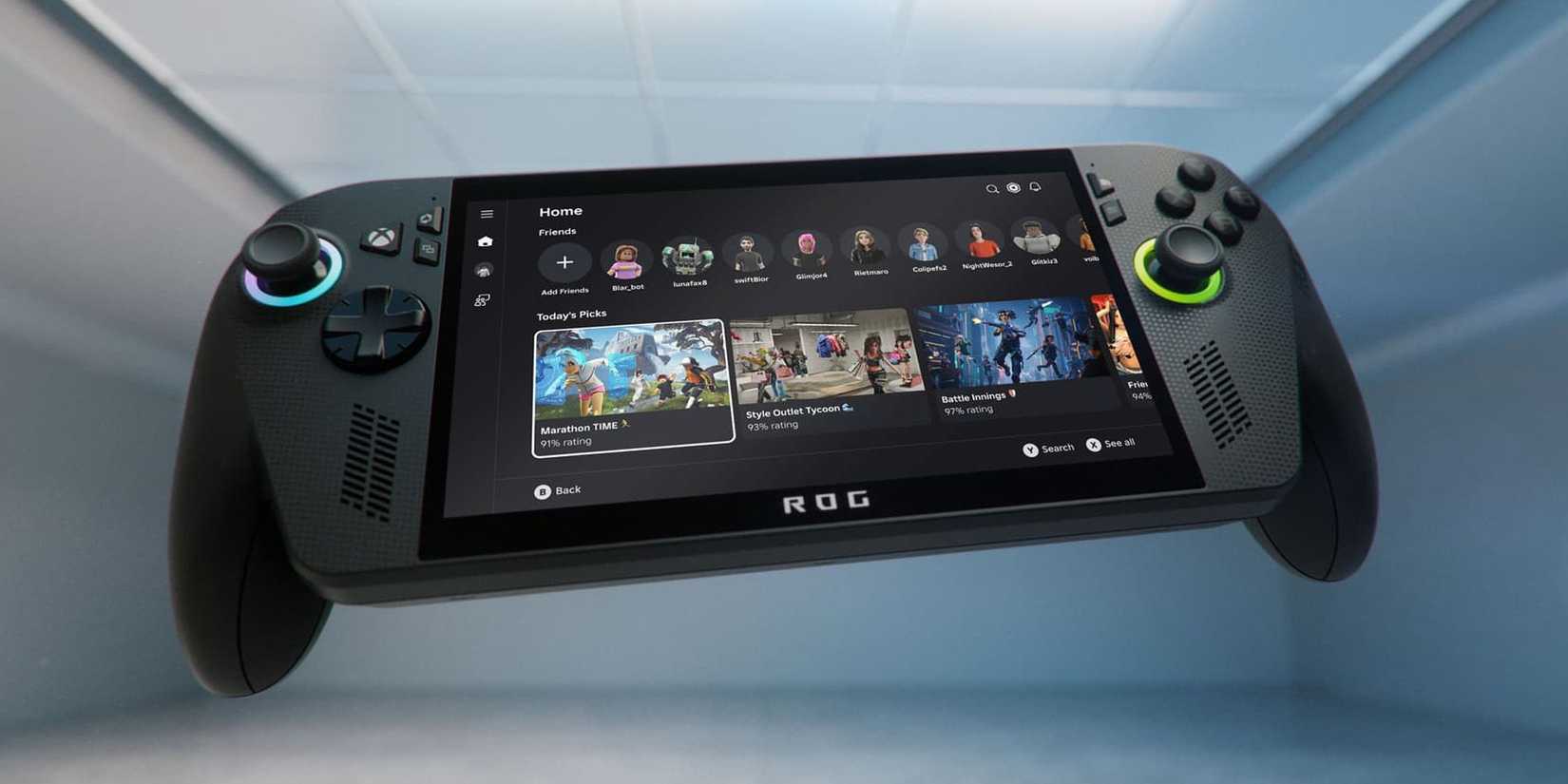The PC Handheld Market Heats Up: A New Challenger Emerges
Popular Now
 Counter-Strike 2
Counter-Strike 2
 Poppy Playtime
Poppy Playtime
 Roblox
Roblox
 Valorant
Valorant
 Gacha Club
Gacha Club
 Call of Duty
Call of Duty
 The Legend of Zelda
The Legend of Zelda
 Stumble Guys
Stumble Guys
 Free Fire
Free Fire
 Sonic the Hedgehog™ Classic
Sonic the Hedgehog™ Classic  The handheld gaming PC market has become a battleground of innovation and intense competition. For years, Valve’s Steam Deck has been the undisputed champion, defining the space with its custom hardware and streamlined Linux-based operating system. However, the landscape is shifting dramatically. ASUS, a key player in the PC hardware space, is not content with a secondary role. With the recent announcement and impending launch of the ROG Xbox Ally and ROG Xbox Ally X, ASUS and Microsoft have unveiled a highly ambitious strategy aimed squarely at usurping the Steam Deck’s dominance. This new collaboration is more than just a hardware refresh; it represents a fundamental shift in how a Windows-based handheld can compete, leveraging the power of the Xbox ecosystem and a direct, console-like user experience. This article explores the core of this ambitious plan, the key features of the new handhelds, and the significant challenges they face in a market still largely defined by Valve’s pioneering device.
The handheld gaming PC market has become a battleground of innovation and intense competition. For years, Valve’s Steam Deck has been the undisputed champion, defining the space with its custom hardware and streamlined Linux-based operating system. However, the landscape is shifting dramatically. ASUS, a key player in the PC hardware space, is not content with a secondary role. With the recent announcement and impending launch of the ROG Xbox Ally and ROG Xbox Ally X, ASUS and Microsoft have unveiled a highly ambitious strategy aimed squarely at usurping the Steam Deck’s dominance. This new collaboration is more than just a hardware refresh; it represents a fundamental shift in how a Windows-based handheld can compete, leveraging the power of the Xbox ecosystem and a direct, console-like user experience. This article explores the core of this ambitious plan, the key features of the new handhelds, and the significant challenges they face in a market still largely defined by Valve’s pioneering device.
A Strategic Partnership: ASUS and Xbox Join Forces
The original ASUS ROG Ally, while a powerful piece of hardware, faced an uphill battle. It was lauded for its raw performance, a beautiful 1080p 120Hz display, and the flexibility of running a full Windows 11 operating system. However, it was also criticized for its suboptimal battery life and, most importantly, the clunky user experience of navigating a desktop OS with a controller. This is where the new ROG Xbox Ally and ROG Xbox Ally X models aim to make a profound difference. This is a strategic partnership designed to address the very pain points that limited the original model’s mass-market appeal.
 By co-branding with Microsoft’s Xbox, ASUS is not just selling a piece of hardware; they are selling an ecosystem. The new handhelds will boot directly into a new, streamlined Xbox UI overlay, providing a console-like, plug-and-play experience that is a stark contrast to the original model’s full Windows desktop. This is a critical step towards winning over a broader audience that may be intimidated by the intricacies of a traditional PC. The integration is deep, with a dedicated Xbox button that brings up the Game Bar and a new “Handheld Compatibility Program” that clearly labels games as “Handheld Optimized” or “Mostly Compatible.” This program directly tackles one of the biggest challenges for Windows handhelds: ensuring a seamless, out-of-the-box experience for gamers who just want to play without tinkering.
By co-branding with Microsoft’s Xbox, ASUS is not just selling a piece of hardware; they are selling an ecosystem. The new handhelds will boot directly into a new, streamlined Xbox UI overlay, providing a console-like, plug-and-play experience that is a stark contrast to the original model’s full Windows desktop. This is a critical step towards winning over a broader audience that may be intimidated by the intricacies of a traditional PC. The integration is deep, with a dedicated Xbox button that brings up the Game Bar and a new “Handheld Compatibility Program” that clearly labels games as “Handheld Optimized” or “Mostly Compatible.” This program directly tackles one of the biggest challenges for Windows handhelds: ensuring a seamless, out-of-the-box experience for gamers who just want to play without tinkering.
Hardware Innovations and Performance: A Focus on Longevity and Power
Beyond the software, the new handhelds bring significant hardware upgrades that directly address the community’s feedback. The ROG Xbox Ally X, in particular, is a beast of a machine. It’s powered by the new AMD Ryzen AI Z2 Extreme processor, an APU with a built-in Neural Processing Unit (NPU) that will enable future AI-powered features. It also boasts a massive 80Wh battery, a significant jump from the original model’s 40Wh, which should substantially improve gaming sessions on the go. The memory has also been upgraded to a hefty 24GB of LPDDR5X-8000, and the storage is now a 1TB M.2 2280 SSD, which is not only larger but also uses a more standard form factor, making future upgrades easier for the end user.
The more affordable ROG Xbox Ally model is no slouch either. It features the new AMD Ryzen Z2 A processor, 16GB of RAM, and a 60Wh battery. Both models retain the acclaimed 7-inch 1080p 120Hz IPS display with VRR, a feature that remains a key advantage over many competitors. The hardware choices demonstrate a clear focus on not just raw power but on improving the core user experience, from battery life to storage capacity and upgradeability. This is a direct response to the market’s demands and a key part of the strategy to make the new Ally a truly competitive device.
 The Road to Success: Challenges and Market Dynamics
The Road to Success: Challenges and Market Dynamics
Despite the promising features, the ROG Xbox Ally duo faces a difficult, well-established competitor in the Steam Deck. Analyst firms like Omdia predict that the PC handheld market will continue to grow significantly, with millions of units sold in 2025. While this expansion creates an opportunity for new players, Valve’s device still commands a massive market share, estimated to be around 50%. The Steam Deck’s success is not just about hardware; it’s about the software ecosystem, the dedicated SteamOS, and the loyal community it has built. The ROG Xbox Ally must not only prove its technical superiority but also its software’s ability to provide a comparable, or even better, user experience.
The price point for the new models is another critical factor. Leaks suggest a starting price of around $550 for the standard Ally and $900 or more for the Ally X, making them more expensive than the original. This pricing strategy positions the devices as premium, high-performance alternatives, but it could also alienate budget-conscious gamers who are already well-served by the Steam Deck and its more affordable models. ASUS and Xbox’s marketing and sales strategy will need to be aggressive and effective to convince consumers to make the switch.
The ultimate goal is to become the go-to choice for gamers who want the flexibility of a PC with the simplicity of a console. By leveraging the immense library of Xbox Game Pass and integrating a user-friendly interface, ASUS and Microsoft are betting that this combination will be a compelling enough value proposition to take a significant bite out of the Steam Deck’s market share. The launch of these devices marks a new, serious phase in the handheld wars, and the outcome will define the future of this rapidly evolving sector of the gaming industry.








 The Road to Success: Challenges and Market Dynamics
The Road to Success: Challenges and Market Dynamics